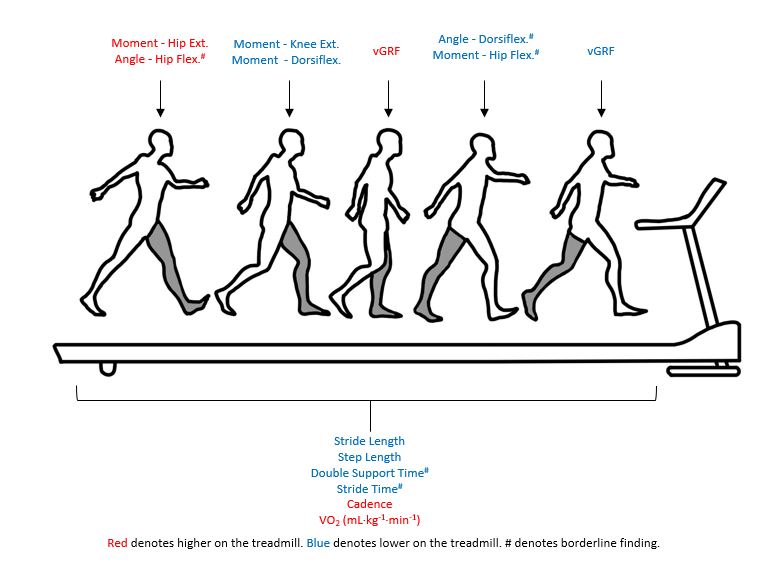What is the Difference between Walking And Jogging: Uncovering the Contrasts
Walking involves a slower pace, while jogging is a faster, more intense form of exercise. Walking is low-impact and gentle on joints, whereas jogging provides a higher cardiovascular benefit.
Both activities offer numerous health benefits, including weight management, stress reduction, and improved cardiovascular health. Understanding the key differences between walking and jogging can help individuals choose the most suitable form of exercise based on their fitness level and goals.
It is essential to consider factors such as intensity, impact on the body, and personal preferences when deciding whether to walk or jog for optimal health and fitness outcomes. By incorporating either walking or jogging into a regular exercise routine, individuals can enhance their overall well-being and enjoy a more active lifestyle.

Credit: www.runsociety.com
Types Of Exercise
Walking and jogging are two different types of exercise that offer varying levels of intensity. While walking is a low-impact exercise that is gentler on the joints, jogging is a higher-impact activity that helps to improve cardiovascular fitness and burn more calories.
Walking
Walking is a type of exercise that involves moving at a moderate pace by using your feet. It is a low-impact activity that can be easily incorporated into your daily routine. One of the main benefits of walking is that it can be done by people of all ages and fitness levels. It is a great way to increase your cardiovascular endurance, strengthen your muscles, and improve your overall health. Walking also has numerous mental health benefits, as it can reduce stress and anxiety, boost your mood, and improve your cognitive function.
- Low-impact activity suitable for all ages and fitness levels.
- Increases cardiovascular endurance.
- Strengthens muscles and improves overall health.
- Reduces stress and anxiety, boosts mood, and improves cognitive function.
Jogging
Jogging is a type of exercise that involves running at a steady and moderate pace. It is more intense than walking and requires a higher level of fitness. Jogging is a great way to burn calories and improve your cardiovascular fitness. It helps to strengthen your muscles, especially in the lower body, such as your legs, hips, and core. Jogging also has numerous health benefits, such as reducing the risk of heart disease, improving lung capacity, and increasing bone density. Additionally, it can boost your energy levels and enhance your mental well-being.
- Higher intensity exercise that requires a higher level of fitness.
- Burns calories and improves cardiovascular fitness.
- Strengthens muscles, especially in the lower body.
- Reduces the risk of heart disease and improves lung capacity.
- Increases bone density, boosts energy levels, and enhances mental well-being.

Credit: twitter.com
Physical Impact
Discover the distinct effects of walking versus jogging on the body. While walking is low-impact, jogging offers higher intensity, benefiting cardiovascular health and calorie burning. Engage in each based on fitness goals and physical capabilities.
Low-impact Exercise – Walking
High-impact Exercise – Jogging
Cardiovascular Benefits
Cardiovascular exercises like walking and jogging offer numerous benefits for heart health and overall well-being. Both activities are effective in improving cardiovascular health, but they deliver different advantages. Let’s explore the specific cardiovascular benefits of walking and jogging.
Benefits Of Walking
Walking is a low-impact aerobic exercise that provides a range of cardiovascular benefits:
- Improved Heart Health: Walking regularly strengthens the heart and enhances its efficiency.
- Reduced Risk of Heart Disease: Regular walks can help lower the risk of heart disease by improving circulation and reducing cholesterol levels.
- Increased Stamina: Walking habitually can enhance overall endurance, contributing to better cardiovascular performance.
Benefits Of Jogging
Jogging, being more intense, offers additional benefits for cardiovascular health, including:
- Enhanced Circulation: The higher intensity of jogging promotes improved blood flow, benefiting the cardiovascular system.
- Boosted Cardiovascular Fitness: Jogging at a moderate pace elevates heart rate, improving cardiovascular endurance over time.
- Calorie Burning: Jogging burns more calories than walking, aiding in weight management and reducing the risk of obesity-related heart issues.

Credit: www.nytimes.com
Caloric Burn
When it comes to comparing walking and jogging, one of the key factors to consider is the difference in caloric burn. The number of calories you burn during an activity plays a crucial role in weight management and overall fitness goals. Understanding the variations in caloric burn during walking and jogging can help you make informed decisions about your exercise routine. Let’s explore the calories burned during walking and jogging in detail.
Calories Burned During Walking
Walking is a low-impact exercise that offers a multitude of health benefits, including improved cardiovascular fitness and muscle tone. In terms of caloric burn, walking may not offer as high an intensity as jogging, but it is still an excellent way to burn calories. The exact number of calories burned during walking depends on various factors, such as your body weight, speed, and distance covered.
The following table provides an estimate of the calories burned during walking based on body weight:
| Weight | Calories Burned in 30 min |
|---|---|
| 120 lbs | 94-148 calories |
| 150 lbs | 117-184 calories |
| 180 lbs | 141-221 calories |
| 210 lbs | 164-258 calories |
Keep in mind that these are approximate values and can vary from person to person. To increase the calorie burn during your walk, you can incorporate inclines, maintain a brisk pace, or extend your walking duration.
Calories Burned During Jogging
Jogging, on the other hand, is a higher intensity exercise that typically results in a greater caloric burn compared to walking. It involves a larger muscle group engagement and a higher level of cardiovascular exertion. The exact number of calories burned during jogging depends on factors such as body weight, speed, and distance covered.
The following table provides an estimate of the calories burned during jogging based on body weight:
| Weight | Calories Burned in 30 min |
|---|---|
| 120 lbs | 202-270 calories |
| 150 lbs | 252-337 calories |
| 180 lbs | 303-404 calories |
| 210 lbs | 353-471 calories |
These calorie burn estimates are subject to variations based on individual factors. To increase your calorie burn during jogging, you can increase your speed, incorporate intervals, or tackle more challenging terrains.
Frequently Asked Questions Of What Is The Difference Between Walking And Jogging
Is Walking Or Jogging Better For Losing Weight?
Both walking and jogging can help in weight loss. However, jogging burns more calories per minute due to its higher intensity. Ultimately, the choice depends on your fitness level and preference. Consistency and duration of physical activity are also key for weight loss.
How Many Minutes Of Walking Is Equivalent To Jogging?
Walking for 30 minutes is equivalent to jogging for 15 minutes in terms of exercise intensity. Both activities offer similar health benefits.
Is Walking Or Running Better To Lose Belly Fat?
Both walking and running can help lose belly fat. Running burns more calories in less time, but walking is gentler on the body. Choose based on your fitness level and preference.
Which Is Better Jogging Or Brisk Walking?
Jogging and brisk walking are both beneficial, but jogging offers a higher intensity workout. It helps burn more calories, improves cardiovascular fitness, and builds stronger bones. Brisk walking is gentler on the joints and is a good option for beginners or those with joint issues.
Conclusion
Walking and jogging offer unique benefits but differ in intensity and calorie burn. Choose the one that suits your fitness goals and preferences. Remember to stay consistent and enjoy the journey to a healthier lifestyle. Whether you walk or jog, keep moving for better health!







